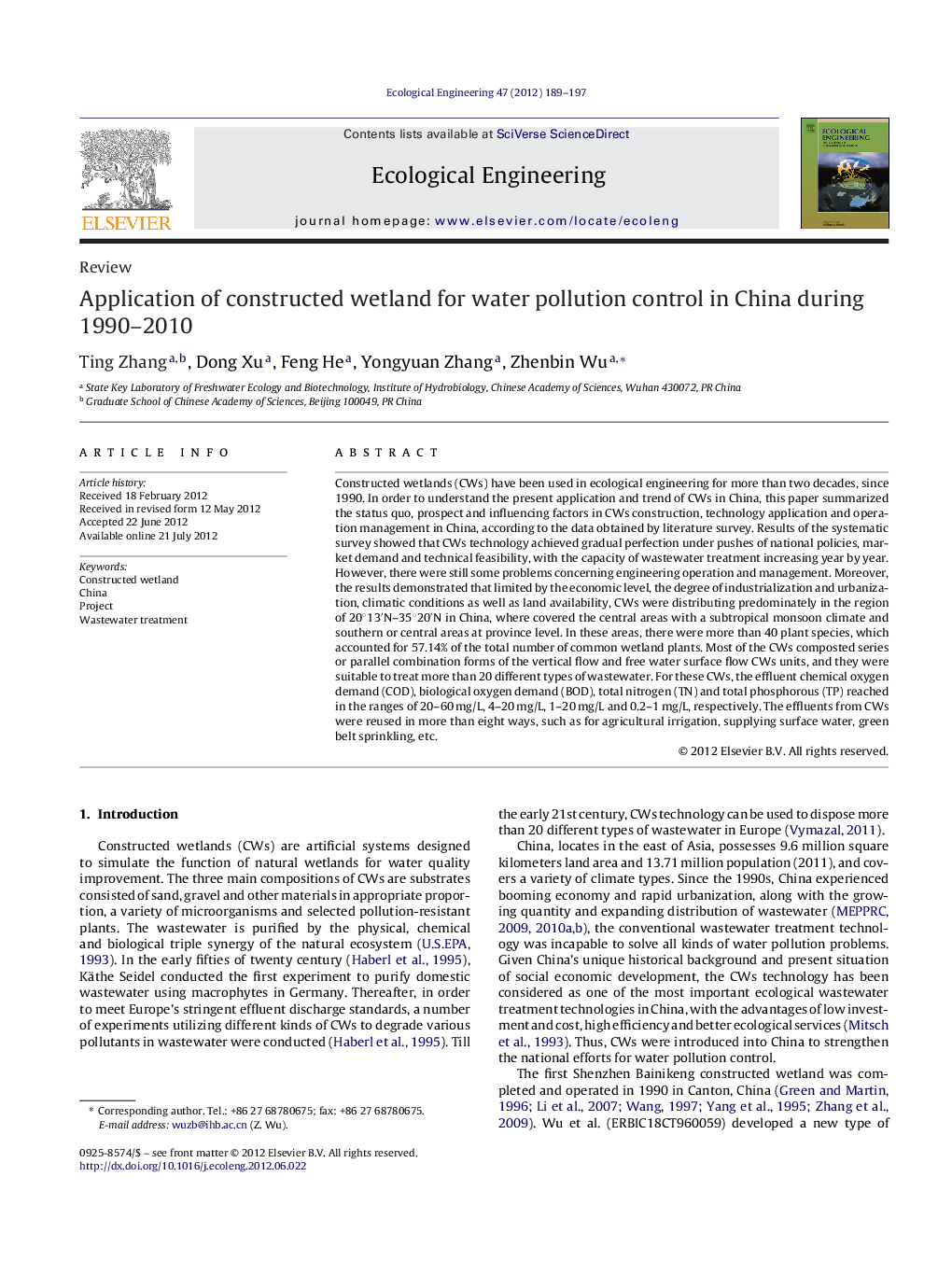| Article ID | Journal | Published Year | Pages | File Type |
|---|---|---|---|---|
| 4390018 | Ecological Engineering | 2012 | 9 Pages |
Constructed wetlands (CWs) have been used in ecological engineering for more than two decades, since 1990. In order to understand the present application and trend of CWs in China, this paper summarized the status quo, prospect and influencing factors in CWs construction, technology application and operation management in China, according to the data obtained by literature survey. Results of the systematic survey showed that CWs technology achieved gradual perfection under pushes of national policies, market demand and technical feasibility, with the capacity of wastewater treatment increasing year by year. However, there were still some problems concerning engineering operation and management. Moreover, the results demonstrated that limited by the economic level, the degree of industrialization and urbanization, climatic conditions as well as land availability, CWs were distributing predominately in the region of 20°13′N–35°20′N in China, where covered the central areas with a subtropical monsoon climate and southern or central areas at province level. In these areas, there were more than 40 plant species, which accounted for 57.14% of the total number of common wetland plants. Most of the CWs composted series or parallel combination forms of the vertical flow and free water surface flow CWs units, and they were suitable to treat more than 20 different types of wastewater. For these CWs, the effluent chemical oxygen demand (COD), biological oxygen demand (BOD), total nitrogen (TN) and total phosphorous (TP) reached in the ranges of 20–60 mg/L, 4–20 mg/L, 1–20 mg/L and 0.2–1 mg/L, respectively. The effluents from CWs were reused in more than eight ways, such as for agricultural irrigation, supplying surface water, green belt sprinkling, etc.
